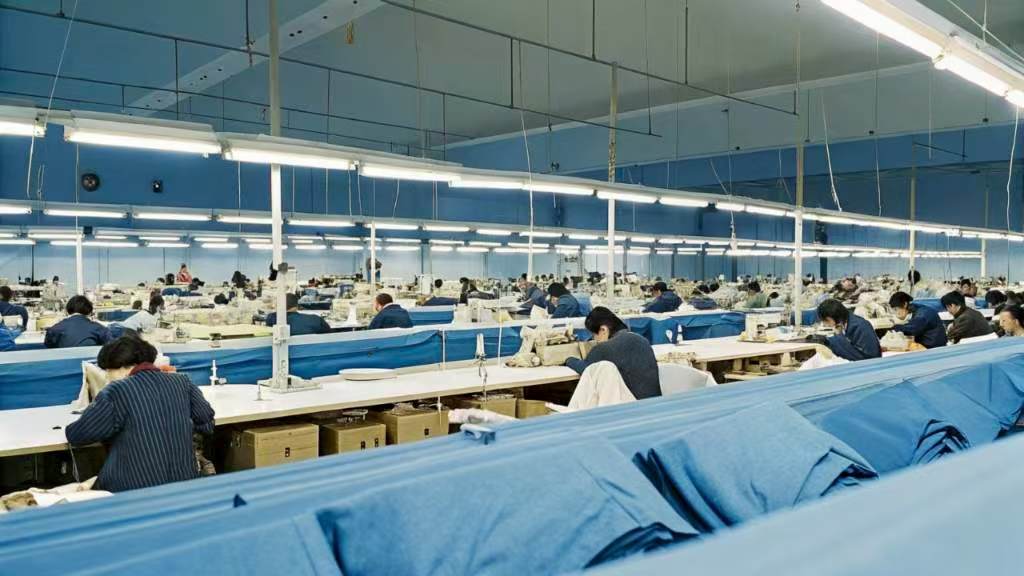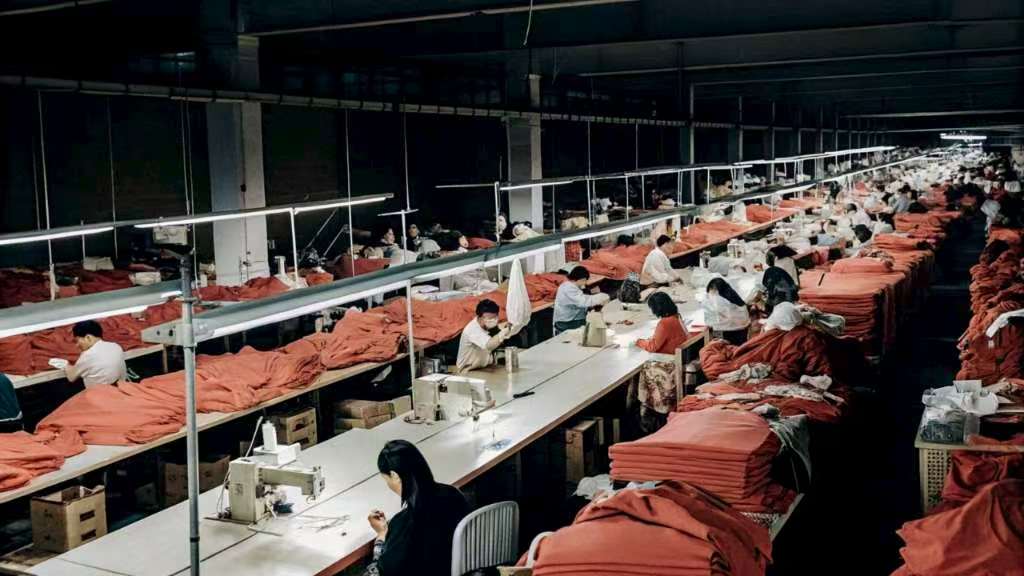Italy’s contribution to global sportswear goes far beyond style—it’s about generations of craftsmanship, relentless innovation, and a unique blend of fashion with technical expertise. Many founders and designers are surprised by just how many iconic sports brands trace their roots to Italian soil. If you’re exploring the value of “Made in Italy1” for your own activewear line, it pays to understand the legacy and the strategic advantages Italian manufacturing brings.
FILA, Diadora, and Lotto2 are among the most iconic sports brands made in Italy, each representing a powerful fusion of Italian design, quality, and athletic performance. Italian sports apparel manufacturers3 are globally respected for textile innovation4, precise engineering, and their deep partnerships with leading international brands. Sourcing from Italy isn’t just about quality—it’s about telling a story of authenticity, heritage, and technical mastery.
When I first toured Italian sportswear factories, I saw firsthand how every piece—from a classic tennis polo to a modern cycling jersey—was touched by skilled hands and backed by family tradition. Working with these partners is more than a transaction: it’s a collaborative journey5 that elevates your entire brand image. In this guide, I’ll break down the history, processes, and best practices for leveraging Italy’s unique position in the sportswear world.
Which Iconic Sports Brands Originated in Italy?

Garment Factory Sewing
Italy’s impact on the athletic world is seen through brands that have shaped sports culture both at home and worldwide.
How Did FILA Become a World-Renowned Italian Sports Apparel Brand?
FILA began in the textile city of Biella in 1911. Originally focused on premium underwear and knitwear, the brand transformed into a global sportswear leader by embracing tennis in the 1970s. Collaborations with tennis legends and bold, instantly recognizable colorways gave FILA international fame. Today, FILA bridges classic Italian elegance with street style and athletic performance, proving that Italian roots can thrive on the world stage.
Why Are Diadora and Lotto Significant Names in Italian Sportswear History?
Diadora started as a small workshop in 1948, making mountain boots before expanding into football, cycling, and running shoes. The brand’s reputation for comfort and durability led to partnerships with star athletes. Lotto, founded in 1973 in Treviso, quickly became a fixture in football and tennis, known for both shoes and technical clothing. Both brands showcase Italy’s unique approach: blend innovation with a respect for tradition, focus on real athletes, and never sacrifice style for function.
What Sets Italian Sports Apparel Manufacturers Apart from Global Competitors?
What makes Italian sportswear factories special isn’t just their history—it’s how they bring together design, engineering, and flexible production.
How Do Italian Manufacturers Combine Quality, Design, and Innovation?
Italian factories don’t see performance and style as opposites—they treat them as equal priorities. Their teams of designers, engineers, and artisans work side by side, allowing for quick iteration and constant quality control. Italian manufacturing is about more than assembly: it’s about refining every detail, from the fit of a cycling bib to the feel of a jersey collar.
Italian Manufacturing Strengths
- Integrated Supply Chains:
Many Italian manufacturers own or directly manage their own fabric mills, dye houses, and trim suppliers. This means faster prototyping and stricter quality assurance. - Skilled Labor:
Local artisans and technicians pass their expertise from generation to generation, leading to meticulous attention at every stage—from pattern cutting to seam sealing. - Flexible MOQ and Customization:
Unlike many large-scale Asian factories, Italian producers often accept smaller orders or custom runs for premium brands or limited-edition drops.
What Fabrics and Technologies Are Unique to Italian Sportswear?
Italy leads the way in technical textiles, especially for cycling, triathlon, tennis, and luxury athleisure. Top mills like Carvico, Miti Spa, and Jersey Lomellina supply stretch, moisture-wicking, and recycled fabrics that are used by global brands.
Technology and Fabric Highlights

- Eco-Friendly Yarns:
Recycled polyamides and polyester blends that offer both sustainability and high performance. - Seamless & Laser-Cut Construction:
For garments with minimal seams, improved comfort, and modern styling. - Digital Sublimation Printing:
Bright, intricate graphics that hold up to sweat, stretch, and repeated washing. - Antibacterial and Quick-Dry Treatments:
Commonly used in Italian-made training and cycling apparel.
If you want to stretch your startup capital, focus on efficiency and leverage your supplier’s existing strengths.
How Do Italian Sports Apparel Manufacturers Work with International Brands?
Italy isn’t just a home for domestic brands—it’s the manufacturing engine for luxury, specialty, and high-end sportswear lines across the world.
Which International Sports Brands Partner with Italian Manufacturers?
Brands from the US, UK, Japan, and even other parts of Europe regularly contract Italian suppliers for their most demanding collections.
- Cycling: Rapha, Castelli, Assos, and Pearl Izumi often rely on Italian factories for race jerseys, bib shorts, and accessories.
- Luxury Collaborations: Many runway brands and capsule collections (even Nike and Adidas limited releases) are produced by Italian workshops specializing in premium quality.
- Emerging Athleisure Labels: Startups and boutique brands seek out Italian partners to add prestige and set themselves apart in a crowded market.
How Does “Made in Italy” Influence Global Perception and Brand Value?
“Made in Italy” is more than a label—it’s a strategic asset. For consumers, it signals authentic craftsmanship, innovation, and status. Retail buyers and influencers recognize Italian manufacturing as a badge of trust and exclusivity, often allowing brands to command higher prices and target luxury channels.
- Enhanced Brand Image:
Even a single “Made in Italy” line can elevate a brand’s global reputation. - Retail Partnerships:
Major e-commerce sites and boutique retailers frequently search for Italian-made lines to meet the demand for quality and heritage. - Long-Term Value:
Many brands find that their Italian-made collections deliver lower return rates and higher customer satisfaction scores.

Garment Workers Sewing
Where Are Italy’s Main Sportswear Manufacturing Hubs Located?
The best Italian sportswear doesn’t come from a single city—it’s the product of a network of specialized regions, each with its own tradition and technical focus.
Why Are Regions Like Veneto and Lombardy Important for Sports Apparel Production?
- Veneto:
Home to legendary footwear brands (Diadora, Lotto) and technical outerwear factories. The region has a deep talent pool in both patternmaking and high-precision sewing. - Lombardy:
Centered around Milan and Biella, this region excels in fabric innovation, advanced textile R&D, and full-package manufacturing. Local mills supply global luxury houses and the world’s top cycling apparel.
Local Cluster Advantage
Factories in these regions benefit from close proximity to yarn suppliers, fabric mills, trim producers, and even dye houses. This supports agile product development and quicker production cycles.
How Does Local Expertise Support Italy’s Sportswear Industry?
Many Italian sportswear businesses are family-owned or have been run by the same teams for decades. This stability means deep trust, fast troubleshooting, and knowledge that can’t be copied by larger, more automated factories abroad.
- Quick Customization:
Local expertise means it’s possible to tweak patterns, colors, or fits mid-season without massive delays. - Technical Advice:
Italian factories often offer design consultation and fabric sourcing support as part of their service.

How Can Buyers Source from an Italian Sports Apparel Manufacturer?
Italy is full of world-class suppliers, but building a strong relationship requires the right approach.
What Are the Best Ways to Connect with Reputable Italian Sportswear Factories?
- Trade Shows:
Attend events like Milano Unica, Pitti Uomo, ISPO Munich, and Performance Days to meet suppliers face-to-face, view samples, and build rapport. - Verified Online Platforms:
Use trusted B2B marketplaces such as ItalianModa, Alibaba (look for “Verified Supplier” badges), or MFG.com, but always request video tours or samples. - Industry Networks & Sourcing Agents:
Referrals from established brands or using specialized Italian sourcing consultants can accelerate trust and negotiation. - Direct Outreach:
Many Italian factories are open to direct pitches, but respond best to well-prepared inquiries with clear business plans and product details.
How Can Brands Ensure Quality and Authenticity When Sourcing from Italy?
- Certification Checks:
Insist on ISO, OEKO-TEX, and GRS documentation to confirm product and ethical standards. - Sampling and Pre-Production:
Always approve golden samples and, if possible, visit the factory before bulk production. - Contract Clarity:
Set clear terms for timelines, defect rates, pricing, and intellectual property. Use NDAs for new designs. - Ongoing Communication:
Italian suppliers value transparency and long-term partnership—schedule regular calls and share honest feedback.
Conclusion
Italy’s sportswear legacy isn’t just history—it’s a living advantage for today’s brands. FILA, Diadora, and Lotto prove that Italian-made sports apparel stands for more than function; it’s about innovation, prestige, and an unmistakable identity. Whether you’re a new label aiming for premium positioning or a global player looking to elevate your line, partnering with an Italian manufacturer opens the door to world-class materials, skilled craftsmanship, and a story your customers will love.
-
Understand the prestige and trust associated with ‘Made in Italy’ labels in global markets. ↩
-
Learn about Lotto’s impact on football and tennis, blending innovation with tradition in sports apparel. ↩
-
Understand the unique advantages of sourcing from Italian manufacturers, known for quality and craftsmanship. ↩
-
Stay updated on cutting-edge textile innovations that enhance performance and sustainability in sportswear. ↩
-
Explore the advantages of collaboration in manufacturing, leading to elevated brand image and quality. ↩













